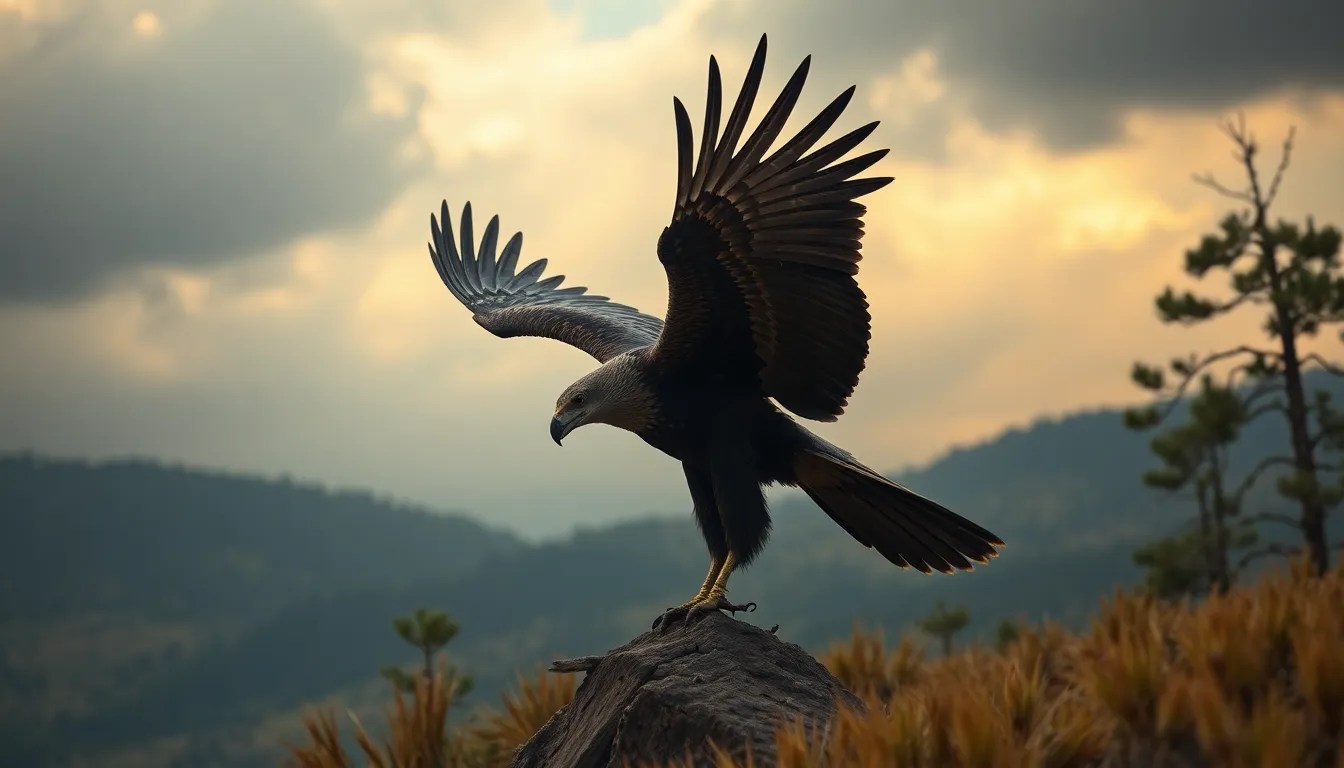The Great Buzzard: How Cherokee Myths Explain the Landscape
I. Introduction
Cherokee mythology is rich with stories that explain the natural world, weaving together elements of creation, landscape, and cultural identity. In these narratives, the land is not merely a backdrop but a central character that reflects the beliefs and values of the Cherokee people. Among the many figures in Cherokee mythology, the Great Buzzard stands out as a pivotal character who played a significant role in shaping the earth itself.
The landscape holds immense importance in Cherokee culture, serving as a source of identity, spirituality, and sustenance. The Great Buzzard, as a key figure in creation stories, embodies the connection between the Cherokee people and the land they inhabit.
II. The Great Buzzard in Cherokee Creation Stories
The Great Buzzard is depicted as a powerful creator figure in Cherokee mythology, credited with shaping the very land that the Cherokee people call home. His actions during the creation of the earth reveal much about the Cherokee understanding of their environment.
- Role of the Great Buzzard: According to the myths, the Great Buzzard flew over the chaotic waters of the earth and created the land by flapping his enormous wings. Each flap would cause the waters to recede, revealing the earth beneath.
- Key Myths: One of the foundational stories involves the Great Buzzard creating mountains and valleys, shaping the landscape through his powerful movements.
- Symbolism: The Great Buzzard symbolizes not only creation but also the dynamic forces of nature, illustrating how life and death are intertwined in the cyclical process of existence.
III. The Great Buzzard and the Formation of Mountains and Valleys
The Great Buzzard’s influence on the physical landscape is a central theme in Cherokee mythology. His wings carved out valleys, and his mighty flaps raised the mountains.
- Shaping the Terrain: The Great Buzzard’s flight is said to have created the Smoky Mountains, as well as the numerous valleys, lakes, and rivers found throughout Cherokee territory.
- Specific Features: Locations such as the Nantahala Gorge and the Blue Ridge Mountains are often attributed to the actions of the Great Buzzard, highlighting the belief that every geographical feature tells a story of creation.
- Cosmological Interpretation: In Cherokee cosmology, these features are not just physical landmarks but sacred spaces filled with spiritual significance, reflecting the interconnectedness of all living beings.
IV. The Great Buzzard’s Relationship with Other Mythical Beings
The Great Buzzard interacts with various other figures in Cherokee mythology, each relationship teaching important lessons about balance and harmony in nature.
- Interactions: The Great Buzzard is often depicted alongside figures such as the Water Beetle and the Creator, highlighting collaboration and conflict in the process of creation.
- Role in Nature’s Balance: His actions are seen as essential in maintaining the balance of ecosystems, ensuring that life flourishes while also respecting the natural order.
- Lessons Learned: Through these narratives, the Cherokee people learn about the importance of cooperation, respect for nature, and the consequences of disrupting the balance.
V. Cultural Significance of the Great Buzzard
The Great Buzzard holds a special place in Cherokee rituals, traditions, and artistic expressions, symbolizing resilience and renewal.
- In Rituals: The Great Buzzard is often invoked in ceremonies related to renewal and healing, representing the cycle of life and the transformative power of nature.
- Symbol of Renewal: As a figure that embodies rebirth and resilience, the Great Buzzard encourages the Cherokee to persevere through challenges.
- Art and Storytelling: Artistic representations of the Great Buzzard can be found in pottery, weaving, and oral traditions, emphasizing his significance in Cherokee cultural expression.
VI. The Great Buzzard and Environmental Understanding
Cherokee myths, including those of the Great Buzzard, reflect deep ecological knowledge and understanding of the environment.
- Ecological Reflection: The stories illustrate the interconnectedness of all life forms and the importance of maintaining a balance within ecosystems.
- Metaphor for Stewardship: The Great Buzzard can be seen as a metaphor for environmental stewardship, reminding contemporary audiences of their responsibility to care for the earth.
- Contemporary Challenges: The lessons embedded in these myths are particularly relevant today, as they encourage sustainable practices and respect for nature in the face of modern environmental challenges.
VII. Comparative Analysis: The Great Buzzard in Other Indigenous Myths
The figure of the Great Buzzard can be compared to similar characters in other indigenous mythologies, revealing both unique and shared themes.
- Similarities and Differences: Many indigenous cultures have creation myths that involve animals or natural forces shaping the land, though the specifics of each story can vary widely.
- Broader Implications: These comparisons highlight the diverse ways indigenous peoples understand their relationship with the environment and the spiritual significance of the land.
- Unique Place: While the Great Buzzard shares traits with figures in other cultures, his specific actions and symbolism are distinct to Cherokee mythology, rooted in their unique worldview.
VIII. Conclusion
The Great Buzzard is a central figure in Cherokee mythology, representing the profound connection between the Cherokee people and their landscape. Through his actions in creation stories, he illustrates the dynamic interplay of nature, culture, and spirituality.
The myths surrounding the Great Buzzard continue to impact Cherokee identity, shaping how the community views their land and their place within it. These narratives remind us of the importance of preserving indigenous stories and landscapes, ensuring that the wisdom of the past informs our relationship with the earth today.



